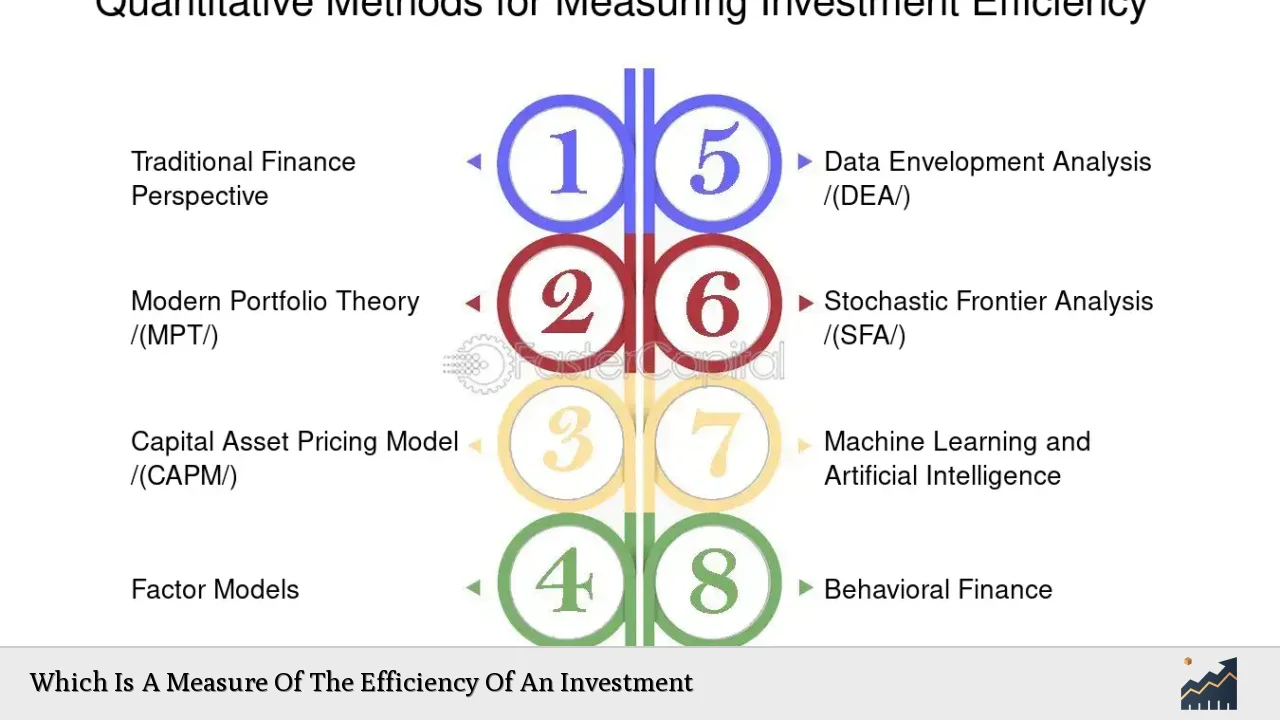Investment efficiency is a critical concept in finance that measures how effectively capital is allocated to generate returns. It reflects the relationship between the inputs (capital, resources) used in an investment and the outputs (returns, profits) generated. Understanding this efficiency is essential for investors aiming to maximize their returns while minimizing risks. Key metrics used to evaluate investment efficiency include Return on Investment (ROI), Total Return, and various performance ratios.
| Key Concept | Description/Impact |
|---|---|
| Return on Investment (ROI) | Measures the profitability of an investment by comparing net profit to the initial cost, expressed as a percentage. A higher ROI indicates better investment efficiency. |
| Total Return | Includes all income generated from an investment (capital gains, dividends, interest) relative to the initial investment cost, providing a comprehensive view of performance. |
| Sharpe Ratio | Assesses risk-adjusted return by comparing excess return over the risk-free rate to the investment’s volatility. A higher Sharpe ratio indicates more efficient risk management. |
| Alpha | Measures an investment’s performance relative to a benchmark index. Positive alpha indicates outperformance, reflecting effective management and investment strategy. |
| Beta | Indicates an investment’s volatility compared to the market. A beta greater than 1 suggests higher risk and potential return, while less than 1 indicates lower risk. |
| Efficiency Ratios | Various ratios (like operating margin or asset turnover) that indicate how well a company uses its assets to generate earnings, impacting overall investment efficiency. |
Market Analysis and Trends
The current market landscape shows a shift towards evaluating investments not just on returns but also on sustainability and risk management. Investors are increasingly using metrics like ESG (Environmental, Social, Governance) scores alongside traditional financial metrics.
Recent trends indicate:
- Declining Inflation Rates: As inflation stabilizes, real returns on investments are becoming more attractive, encouraging investment in equities and fixed income.
- Technological Advancements: The integration of AI in investment analysis tools has revolutionized how investors assess efficiency, enabling real-time data analysis and predictive modeling.
- Focus on Risk Management: With market volatility persisting, investors are prioritizing strategies that emphasize risk-adjusted returns rather than absolute returns.
Implementation Strategies
To effectively measure and enhance investment efficiency, investors can adopt several strategies:
- Diversification: Spread investments across various asset classes to mitigate risk while aiming for optimal returns.
- Use of Technology: Leverage advanced analytics tools to track performance metrics and optimize portfolio allocations based on real-time data.
- Regular Performance Reviews: Conduct periodic assessments of portfolio performance against benchmarks to identify inefficiencies and adjust strategies accordingly.
- Incorporate ESG Factors: Evaluate potential investments based not only on financial metrics but also on their impact on society and the environment.
Risk Considerations
Understanding the risks associated with investments is crucial for measuring their efficiency:
- Market Risk: The potential for losses due to market fluctuations can significantly affect ROI and overall investment performance.
- Liquidity Risk: Investments that cannot be quickly converted into cash without significant loss can impact an investor’s ability to respond to market changes.
- Operational Risk: Inefficiencies within a company’s operations can lead to lower returns; thus, assessing management practices is vital.
- Regulatory Risks: Changes in regulations can impact investment strategies and outcomes; staying informed about regulatory environments is essential.
Regulatory Aspects
Investment efficiency is also influenced by regulatory frameworks that govern how investments are made:
- Transparency Requirements: Regulations like the Sarbanes-Oxley Act mandate financial disclosures that enhance transparency and accountability in reporting.
- Investment Management Regulations: Compliance with regulations set forth by bodies like the SEC ensures that investment managers act in the best interests of their clients.
- Tax Considerations: Understanding tax implications on different types of investments can help optimize net returns.
Future Outlook
Looking ahead, several factors will shape the landscape of investment efficiency:
- Increased Focus on Sustainable Investing: As more investors prioritize ESG factors, companies demonstrating strong sustainability practices may see improved capital flows and potentially higher returns.
- Technological Integration: The continued evolution of AI and machine learning will enhance data analysis capabilities, allowing for more precise measurements of investment efficiency.
- Global Economic Trends: Monitoring macroeconomic indicators will remain essential as geopolitical tensions and economic policies influence market performance.
Frequently Asked Questions About Which Is A Measure Of The Efficiency Of An Investment
- What is ROI?
Return on Investment (ROI) measures the profitability of an investment by comparing net profit to its initial cost. It is expressed as a percentage. - How do you calculate Total Return?
Total Return includes all income generated from an investment (capital gains, dividends) compared to the initial cost. - What does a high Sharpe Ratio indicate?
A high Sharpe Ratio suggests that an investment provides a good return relative to its risk, indicating efficient risk management. - What is Alpha in investing?
Alpha measures an investment’s performance against a benchmark index; positive alpha indicates outperformance. - Why is Beta important?
Beta assesses an investment’s volatility compared to the market; it helps investors understand potential risks associated with their investments. - How can technology improve investment efficiency?
Advanced analytics tools enable real-time data analysis, allowing investors to make informed decisions quickly. - What role do regulations play in investment efficiency?
Regulations ensure transparency and accountability in financial reporting, which can enhance investor confidence and improve capital allocation. - What future trends should investors watch for?
Sustainable investing practices and technological advancements will significantly influence how investments are evaluated for efficiency going forward.
In conclusion, measuring the efficiency of an investment involves understanding various metrics such as ROI, Total Return, Sharpe Ratio, and Alpha. By integrating these measures with current market trends and technological advancements, investors can make informed decisions that optimize their portfolios for both performance and sustainability.

